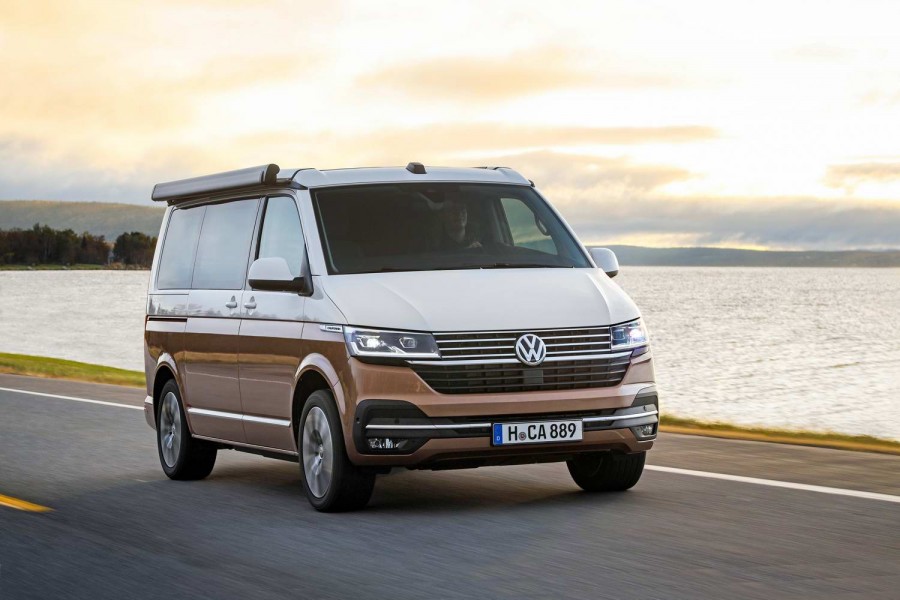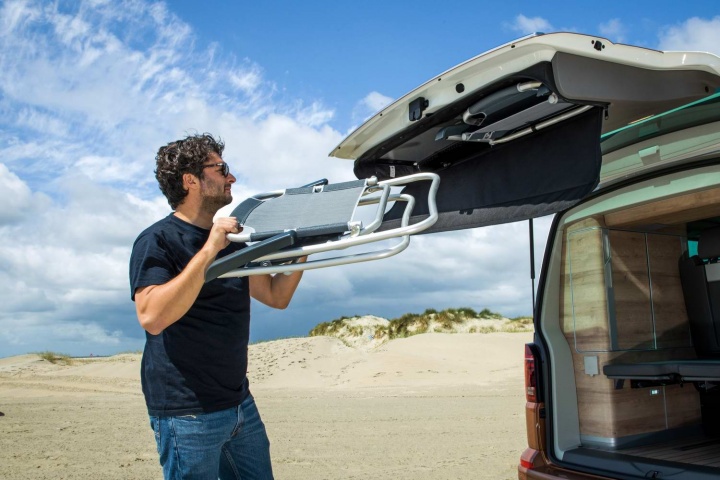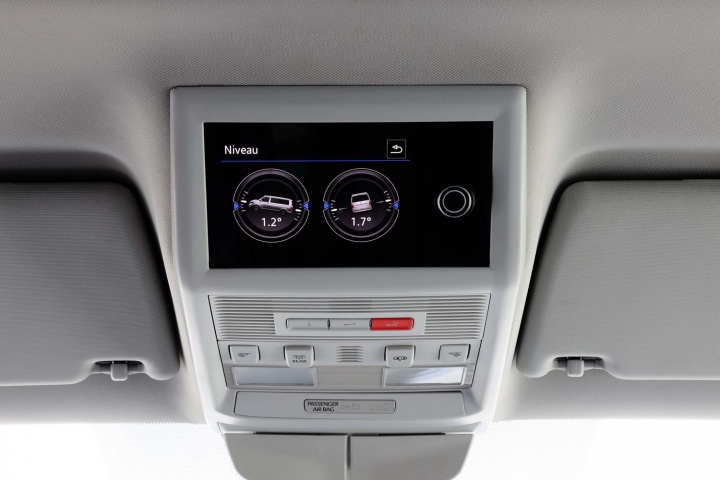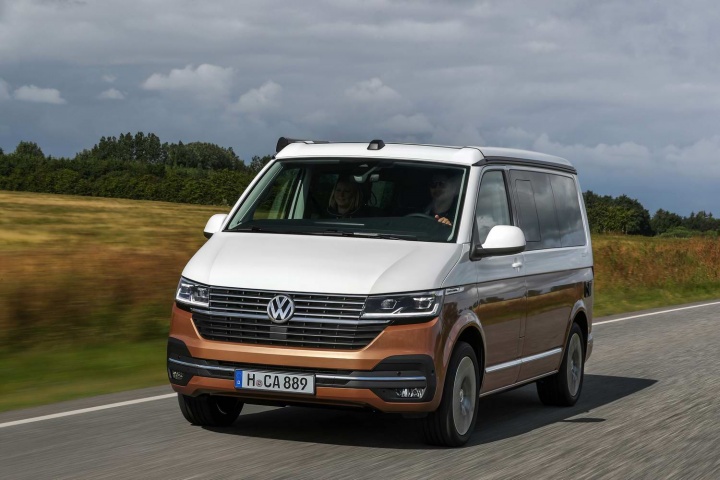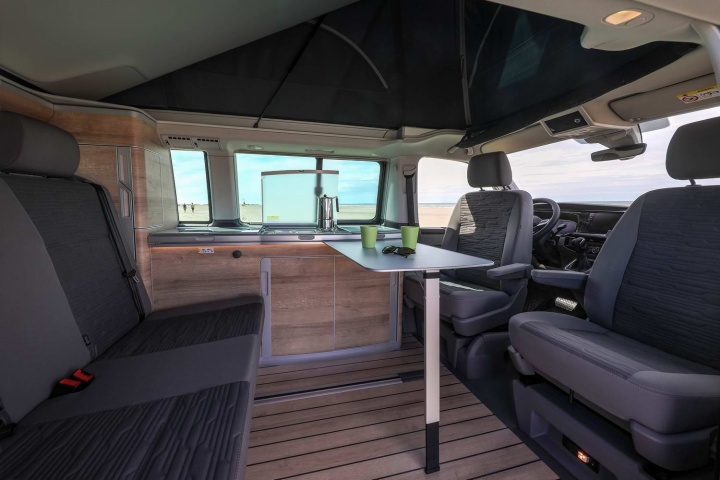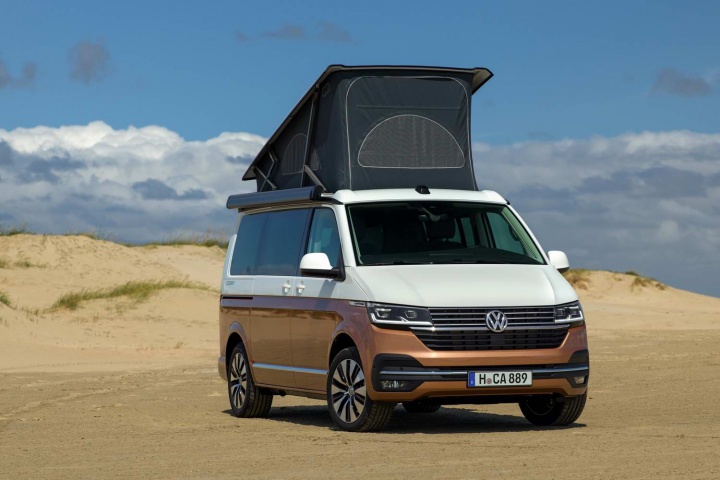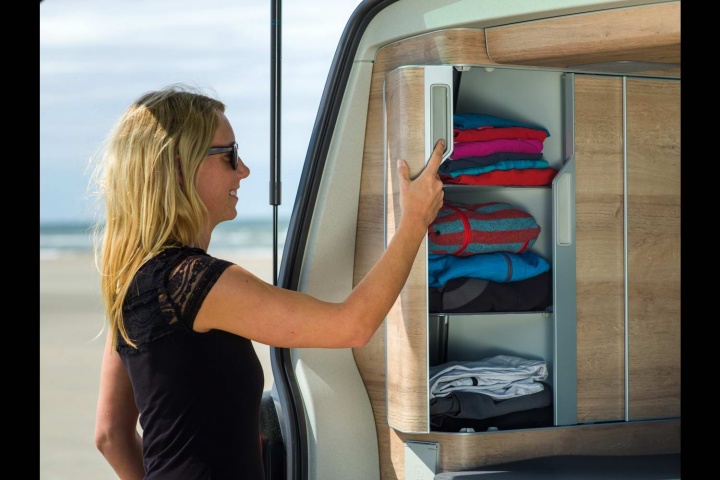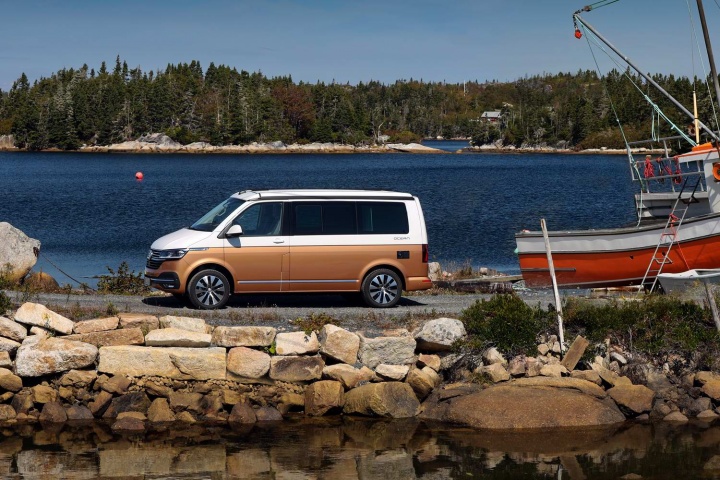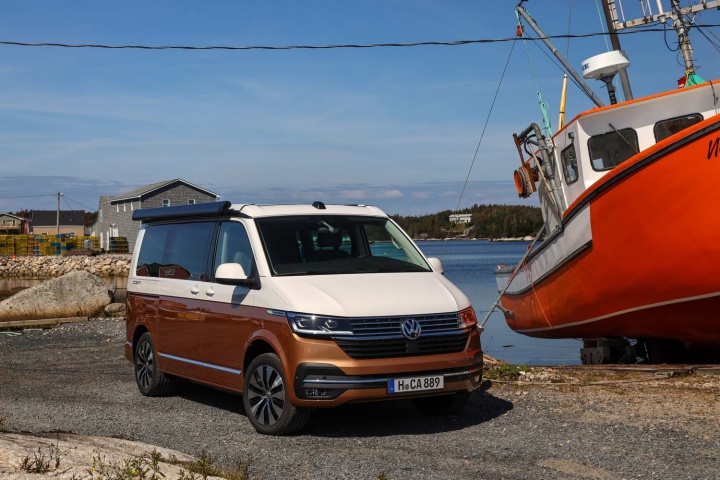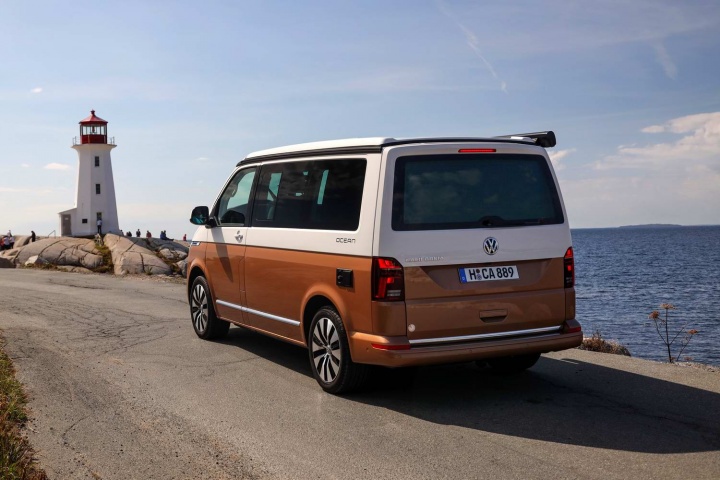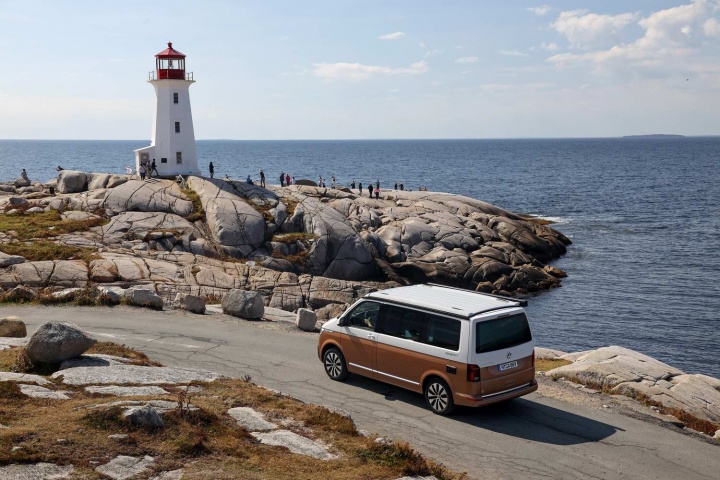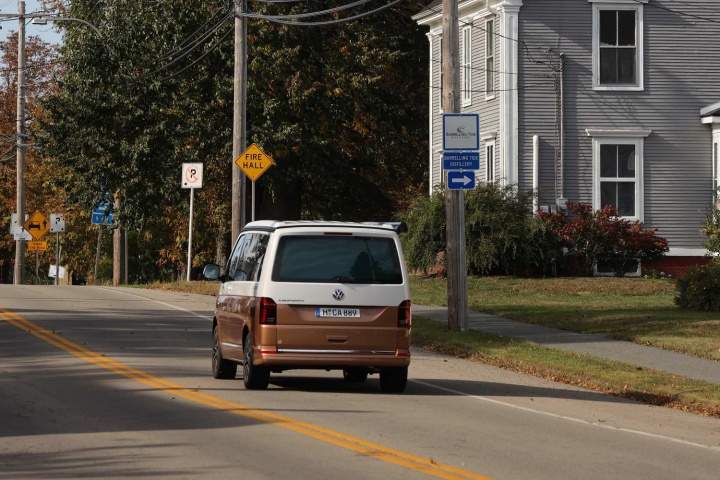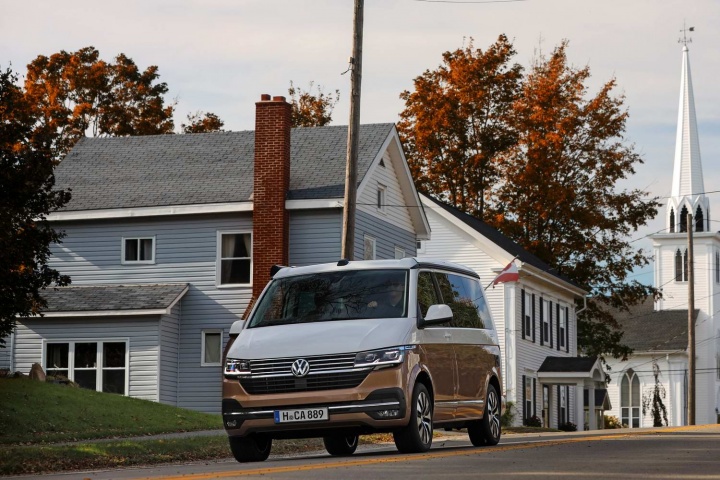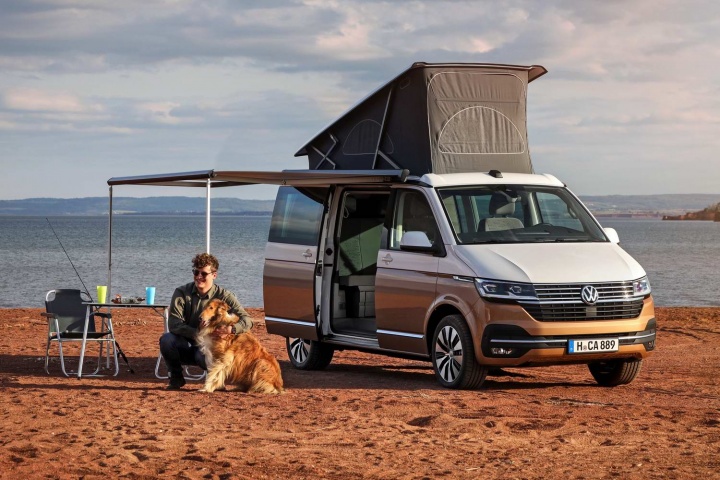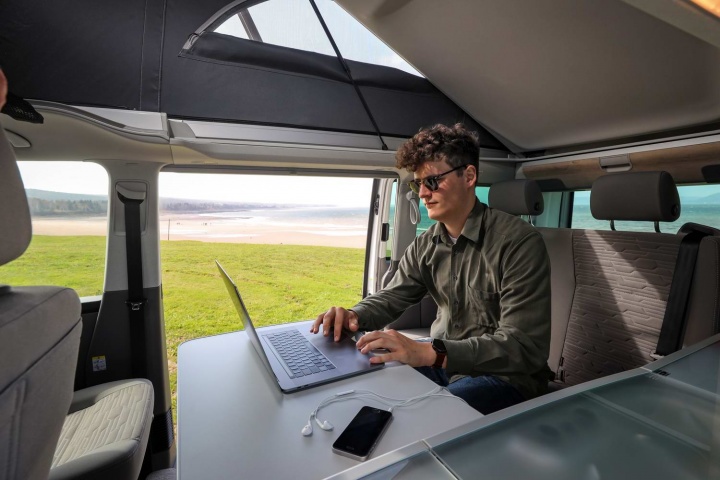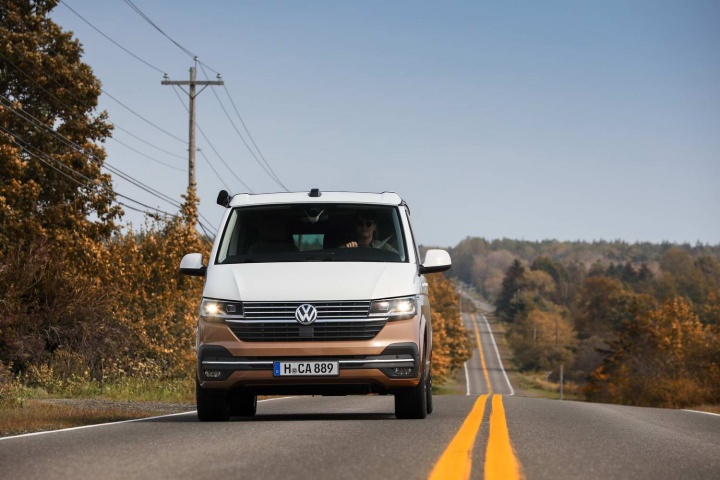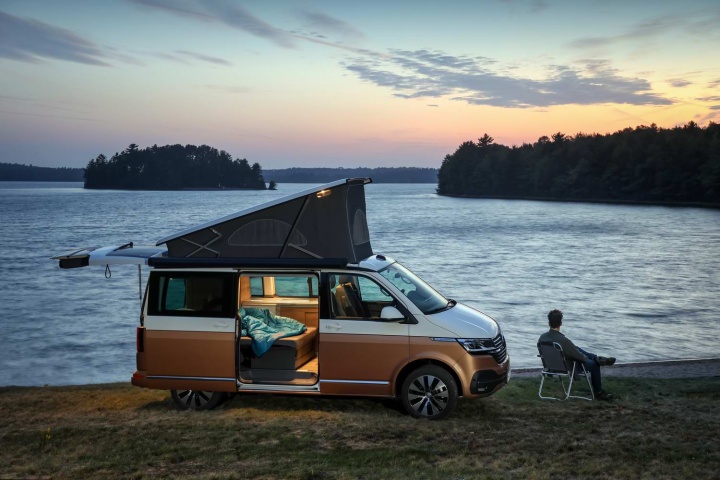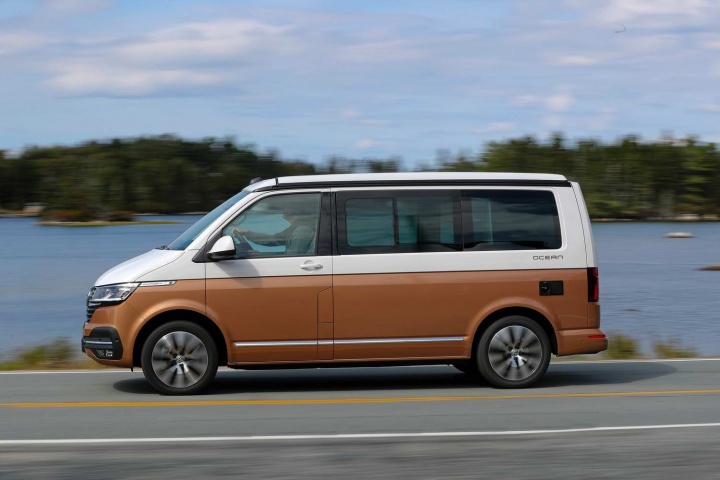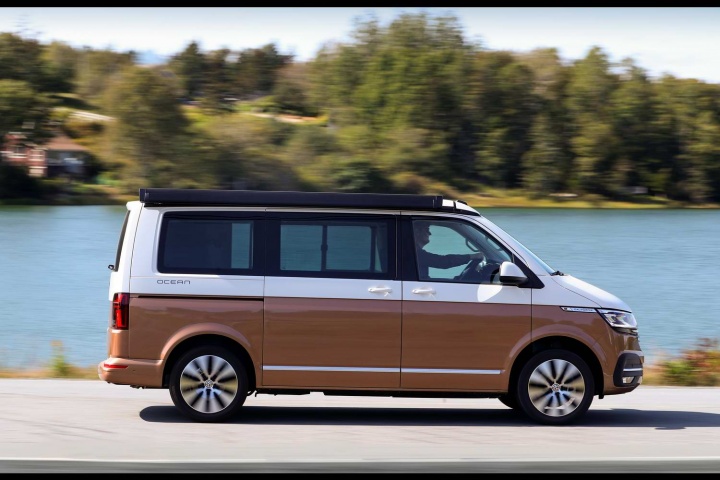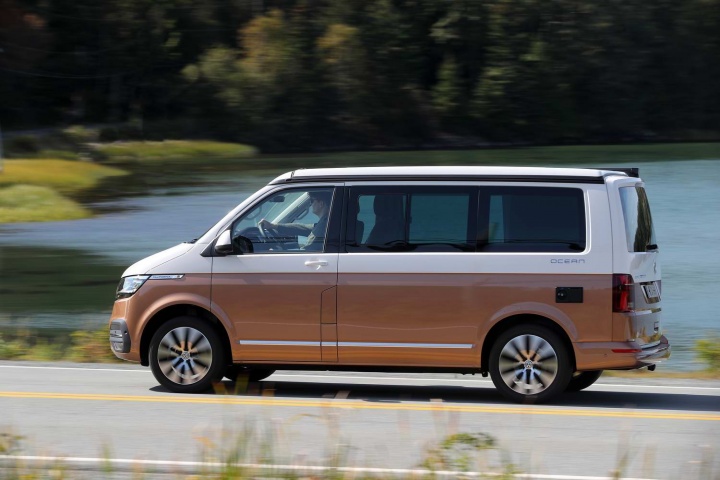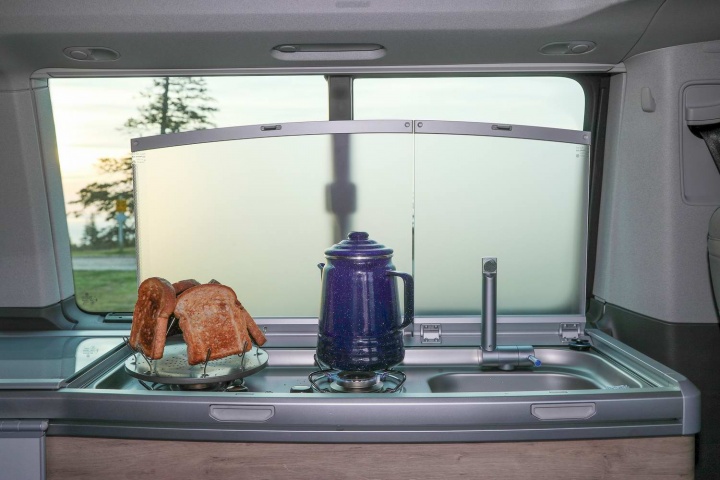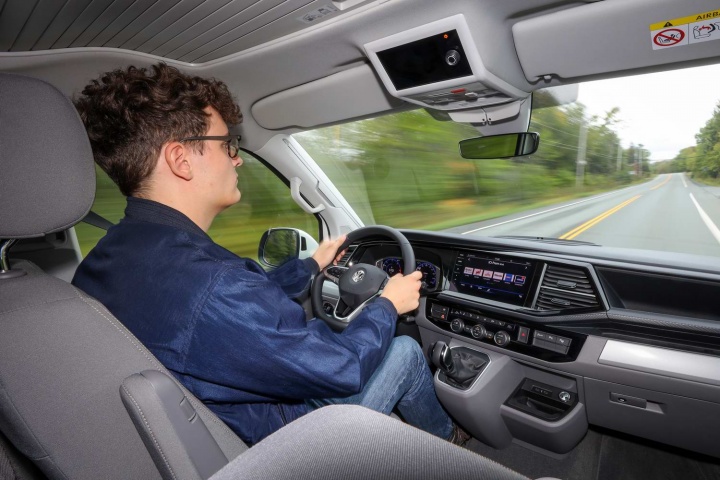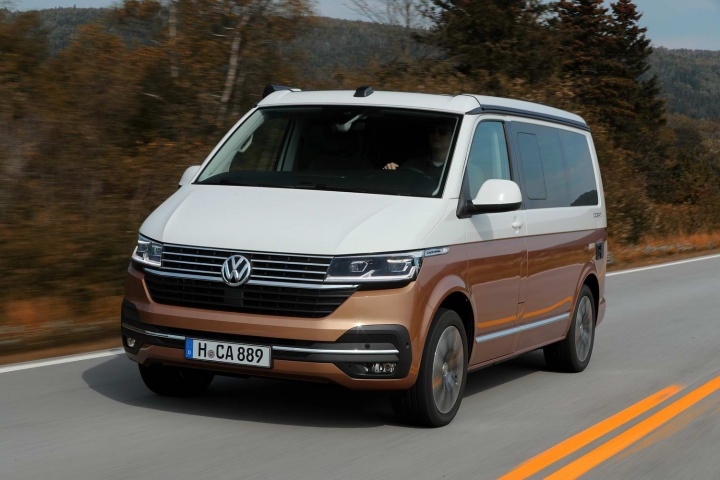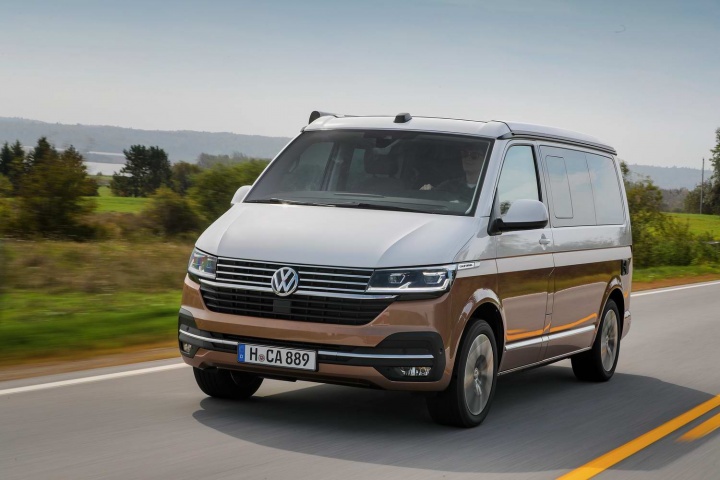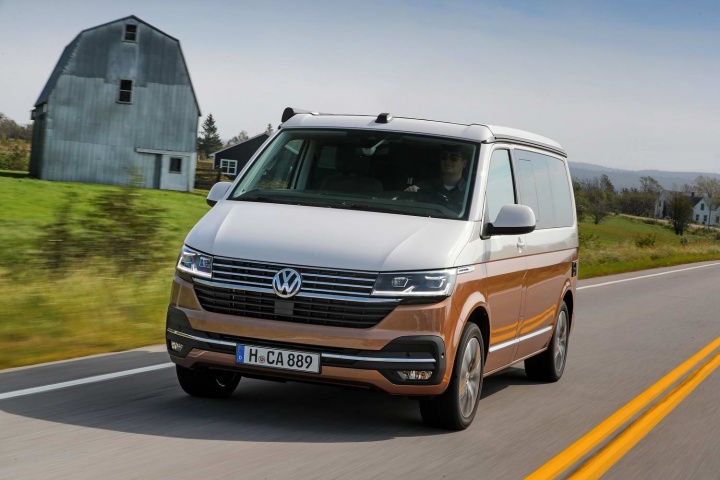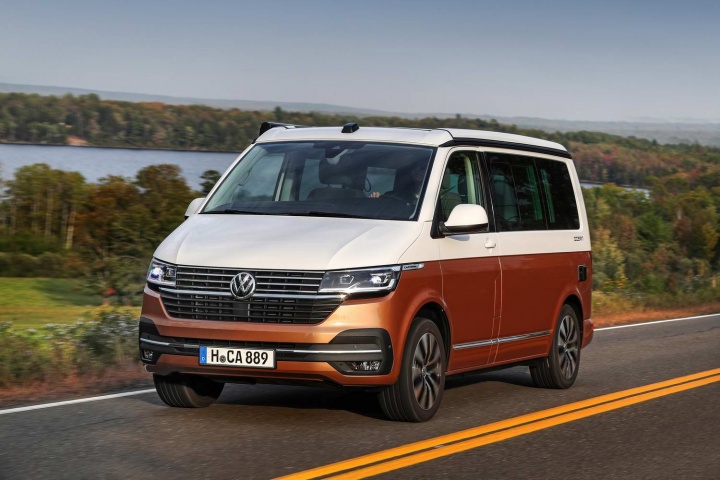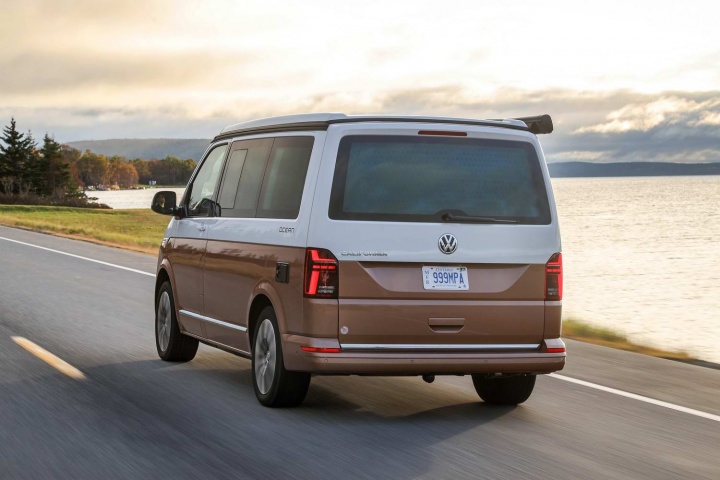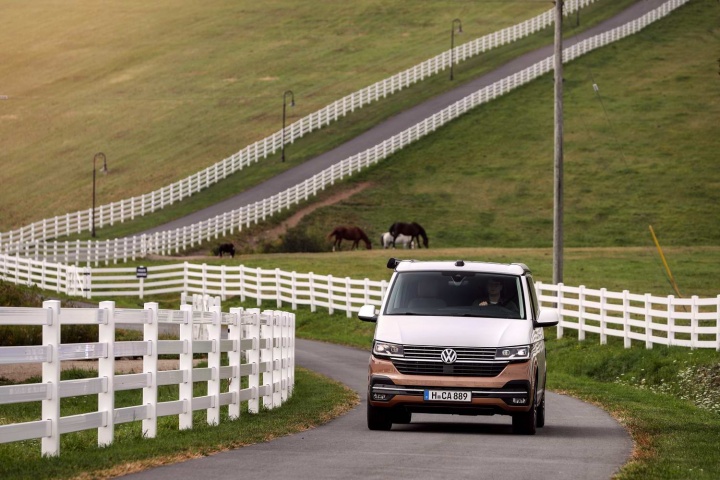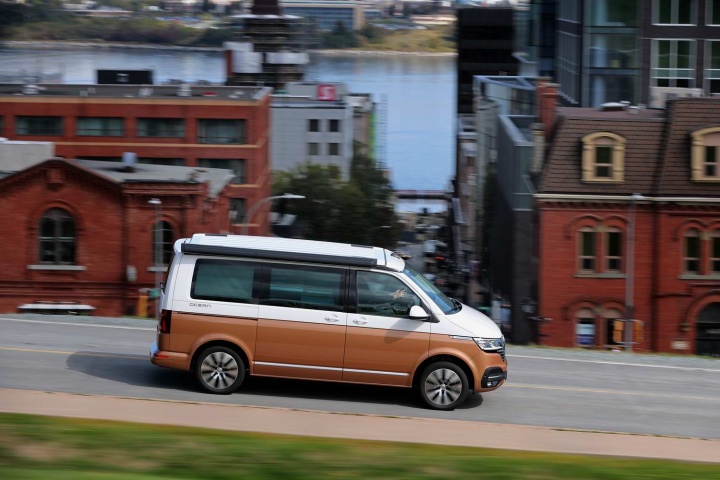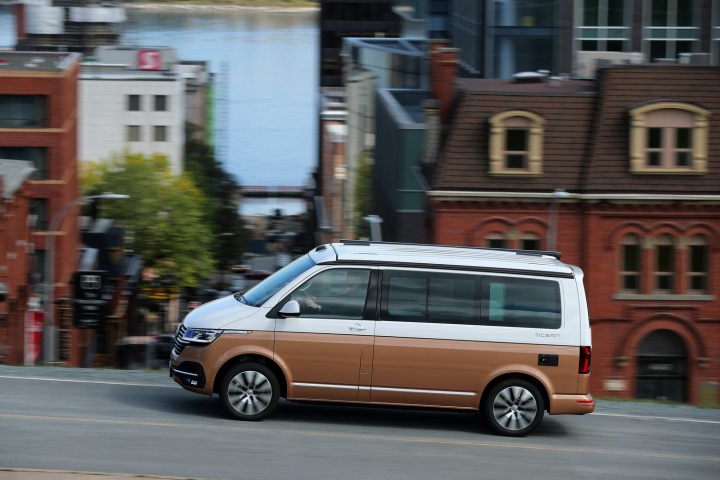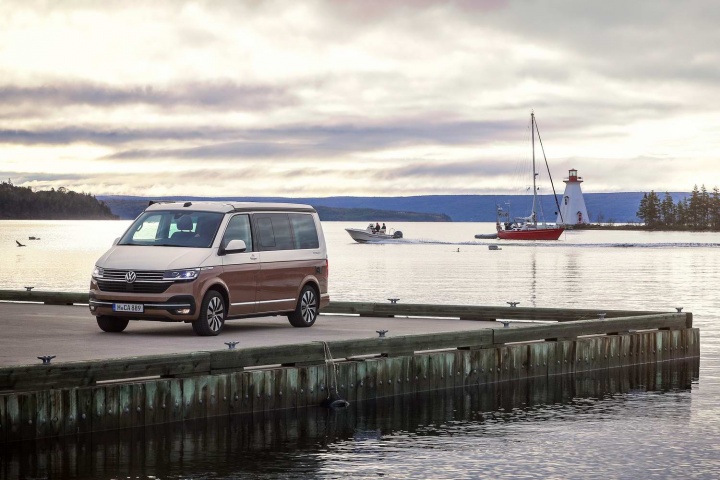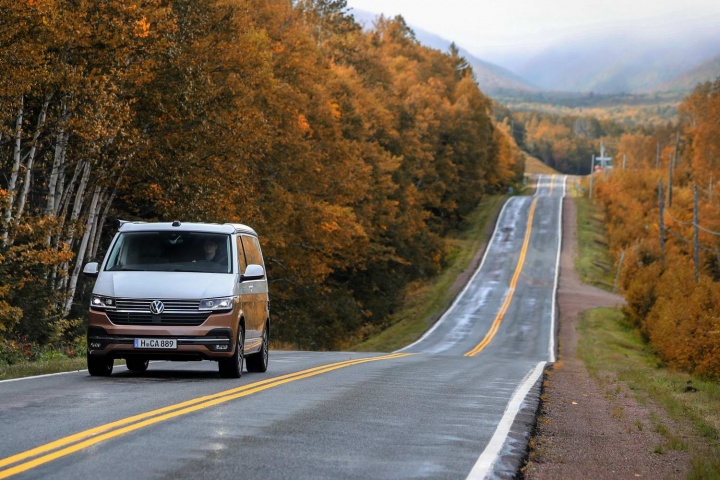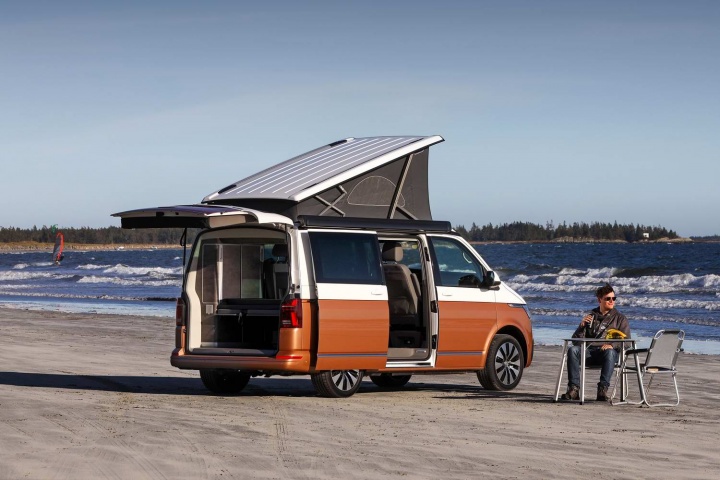The Volkswagen California takes an already proven formula and adds a sprinkle of improvements to make it one of the most complete camper packages on the market. Along with some subtle styling updates, Volkswagen is adding more in-car tech and a broader range of driver assistance systems.
In the metal
The minor exterior styling changes to the Volkswagen California repeat those seen on the similarly updated Caravelle and Transporter models. Most noticeable is the new grille design. On the range-topping Ocean model tested here, it features four chrome strips with the top forming a single design element with the LED daytime running lights. There is also a new 'California' nameplate on the edge of each front wing. A new lower bumper design includes a chrome strip on Ocean models and reshaped intakes for the updated engine. Elsewhere, Volkswagen fits a new antenna unit on the leading edge of the roof that forms part of the emergency eCall system. New wheel designs and colour options, along with new rear light units, round out the exterior update.
On the interior, the California remains a fantastic bit of design, cramming quite a lot into the space. It also manages to do so without skimping on quality. While the overall layout hasn't changed, there are plenty of new features that anyone familiar with previous Californias will appreciate. Starting with the front of the cabin, the California Ocean gets a fully digital 10.25-inch colour instrument display just like the one available on other models like the Volkswagen T-Roc. This allows for several different views and can be configured to suit individual preferences. The rest of the dashboard also gets a revamp and on this top-spec variant gets a 9.2-inch Discover Pro MIB3 infotainment system. Not only does it run Volkswagen's very latest operating system, but it can also wirelessly support Apple CarPlay. It's just as great to look at as it is to use. A handy wireless charging pouch helps to reduce clutter in the cabin, while a new steering wheel design puts many of the controls right at your fingertips.
Speaking of controls, the simple monochrome display panel for the roof and interior controls has been replaced by a snazzy new colour touchscreen that is much easier and faster to use. It has clear displays showing how much water is remaining in the tank and the state of combined charge in the two 75Ah additional leisure batteries. These get topped up while driving and can provide around 60 hours of continuous use when fully charged. A new feature is a level function, which precisely shows what angle the California is parked at, both crossways and lengthways. The upstairs bed gets improved under-mattress support from an array of flexible plastic elements that replace the previous slotted frame, too. A new adjustable section of the downstairs bed adds more functionality if you prefer to stretch out while you work or watch a movie. The layout of the living area is relatively unchanged. You can still swivel the front seats around, though this process does require a little bit of effort to get right, and there's no 'drop' handbrake like in the larger Grand California. When you want to get some sleep, there are blinds for all the windows, including some useful magnetic ones for the front side windows. You can set the interior ambient lighting to a sunrise function, too, which gradually brightens up to wake you more naturally.
Driving it
As the VW California shares the same underpinnings as the Transporter, it already has a size advantage over many other campers. With the pop-up roof stowing away flush with the roof, the California can enter almost any public car park without fear of it catching on anything. It's also narrow enough to fit into a regular parking space. Improvements to the engine and its accompanying DSG automatic transmission result in an increase in refinement on the move. The engine seems a touch quieter and the DSG unit shifts very smoothly.
Where it comes into its own is on the open road. At higher speeds, it cruises along effortlessly, with the twin-turbocharged 2.0-litre TDI engine's 450Nm providing ample pulling power, considering it tips to the scales at just over 2,600kg. Nonetheless, the California's suspension is a touch on the firm side. You'll want to ensure that you have everything well packed before setting off to avoid hearing it all rattle in the back. The upgrade to an electric power-assisted steering system doesn't have any noticeable effect on how the Volkswagen drives, but it does allow for a suite of new driver assistance systems to be introduced. The useful lane keep assist function, for example, can nudge the steering to maintain the car's position in its lane from 60km/h upwards, while parking assist and a new trailer assist function join the list of options. At speeds of over 80km/h, the new Cross Wind Assist function becomes active. Should the van get hit with severe crosswinds, the stability control can apply braking force to individual wheels to help counteract it. Add on the adaptive cruise control function, and this camper becomes quite an efficient mile-muncher. Its comfortable front seats have a heating function and pop-down armrests built-in, further improving comfort.
What you get for your money
Specific equipment and pricing details for the updated Volkswagen California are still in the process of being finalised. We expect that the price will increase slightly over the outgoing California as a result of the new features mentioned above. The California was previously available in two specification grades, Coast and Ocean, and this structure is likely to continue for the new model. All versions sold here come with the built-in fridge, two-gas hob and sink unit, including a 30-litre water tank.
Summary
The improvements and additional options now available in this latest Volkswagen California make it an expensive, but very desirable camper. We love the layout and design of it and its ability to cover so much distance in comfort. Yes, there are more affordable options on the market, but spend any amount of time inside this van, and it becomes easy to see why we've rated the Volkswagen California as highly as we have.

